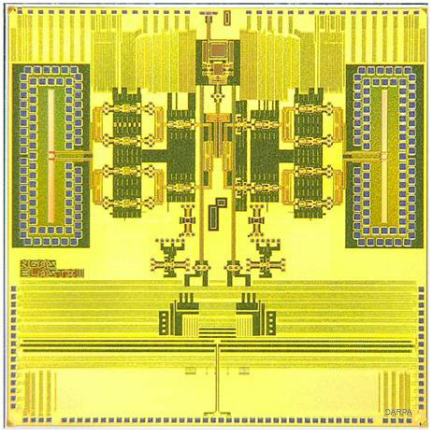'System on a chip' a boost for next-gen RF communications
DARPA researchers demonstrate an all-silicon SoC transmitter that could make RF systems smaller, lighter, cheaper and better.

A recently demonstrated breakthrough in silicon chip design promises to benefit radio frequency communications on three fronts—contributing to systems that are smaller and lighter, more powerful and less expensive.
Researchers with the Defense Advanced Research Projects Agency demonstrated an all-silicon “system on a chip” transmitter about the size of a microchip that operates at 94 GHz, the first time a silicon-only SoC was able to operate at that millimeter-wave range, according to DARPA.
Millimeter-wave systems, which provide high throughput and efficiency, tend to be made with integrated circuits of gallium arsenide or gallium nitride. But they are expensive and don’t always play well with the silicon electronics elsewhere in the system, DARPA said. Integrated circuits made entirely of silicon are cheaper to produce, but to date haven’t had the power to operate at high frequencies.
Researchers with DARPA’s Efficient Linearized All-Silicon Transmitter ICs, or ELASTx, program, working with Northrop Grumman Aerospace Systems, developed an all-silicon SoC transmitter that uses a digitally assisted power amplifier that enables it to respond to changing signal demands.
“This SoC can support a range of modulation formats, so it’s possible to communicate to multiple systems using different waveforms from a single silicon chip,” said program manager Dev Palmer. And its design also cuts down the amount of equipment needed.
“What normally would require multiple circuit boards, separate metal shielded assemblies and numerous I/O cables we can now miniaturize onto one silicon chip about half the size of an adult’s thumbnail,” Palmer said. “This accomplishment opens the door for co-designing digital CMOS [complementary metal oxide semiconductors] and millimeter-wave capabilities as an integrated system on an all-silicon chip, which should also make possible new design architectures for future military RF systems.”
Wireless communications are an increasingly important part of the military’s plans, as the Army continues to extend its tactical network to the squad level, and tests everything from tactile communications systems and real-time smartphone-based data sharing to 4G LTE capabilities on the battlefield. http://defensesystems.com/articles/2014/06/24/army-4g-lte-battlefield-network.aspx DARPA also is working on integrating smartphones, sensors and other battlefield communications tools, with a project it calls Squad X.
All of those systems make use of the RF spectrum, of course, so the more efficiently warfighters can use it, the better. The ELASTx program’s system on a chip could improve that efficiency.
NEXT STORY: An ISR drone in your pocket



